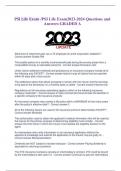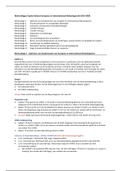Resume
summary all materials for PRINCIPLES AND FOUNDATIONS OF INTERNATIONAL LAW
- Cours
- Établissement
summary all materials for PRINCIPLES AND FOUNDATIONS OF INTERNATIONAL LAW giving in the master's degree (LL.M) at the University of Amsterdam (UvA) International and European Law
[Montrer plus]












